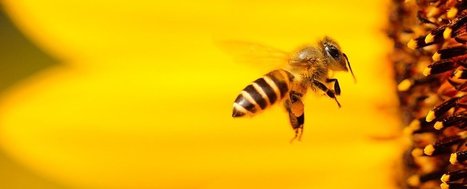"New research on how bees perceive colour could be put to good use in our digital cameras, meaning photos shot by drones or phones would look more natural than ever. It's all to do with colour constancy, the way that bees (and humans) can tell a flower is red no matter what the colour or quality of the light – a mental trick that the digital cameras of today really struggle with."
Research and publish the best content.
Get Started for FREE
Sign up with Facebook Sign up with X
I don't have a Facebook or a X account
Already have an account: Login
 Your new post is loading... Your new post is loading...
 Your new post is loading... Your new post is loading...
|

Marcelo Errera's curator insight,
February 20, 2017 7:21 PM
Another interesting example of design evolution. Those blades provide a good compromise between drag and net torque. It is a finite-size system which design is evolving to facilitate the flow of energy from the wind to a rotating axis. |












